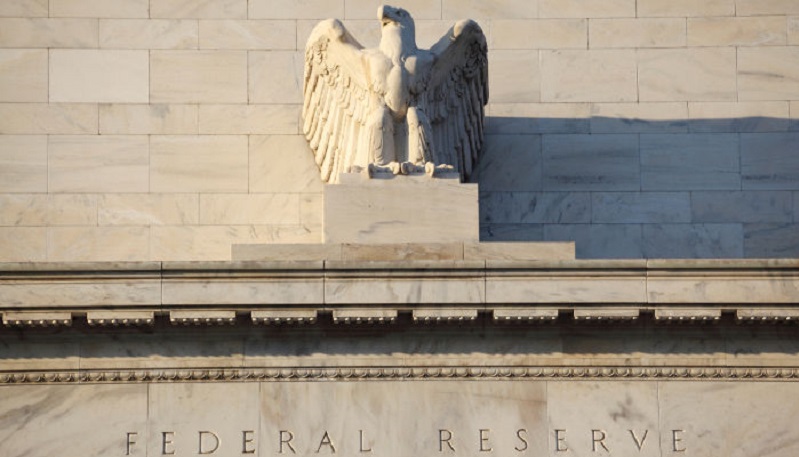Three major central banks are set to announce their latest monetary policy decisions this week.
The Fed will decide its latest course of action on Wednesday, before the Bank of England follows on Thursday. Finally, the Bank of Japan will announce on Friday.
Ahead of the decisions, Jupiter Asset Management head of fixed income Matthew Morgan said: “In recent weeks, the market narrative has again shifted from optimism that inflation has been dealt with, to fears of an inflation reacceleration driven by robust consumer data and recovering oil prices. Consumer resilience has been surprising, and this period of volatility and uncertainty could be with us for some time.
“It may be an increasingly old-fashioned view but there is a risk that traditional economic rules apply: we’ve now added more than 5% to the cost of capital for consumer credit, mortgages and corporates. ‘Long and variable lags’ are proven to exist, and probably getting longer. Soft landing complacency existed before every previous hard landing.
“The lessons of history, together with slowing inflation and some signs the consumer is running out of money, mean central banks should pause here and wait and see the impact of what they already done rather than risk serious damage to the economy.”
See also: Premier Miton’s Rayner: Oil price rise complicating inflation battle
US Federal Reserve
Industry commentators are currently expecting the Fed to hold rates at its current level at Wednesday’s Federal Open Market Committee (FOMC) meeting.
The Fed has so far taken the upper Fed Funds rate to 5.5% from 0.25% since March 2022.
Ronald Temple, chief market strategist at Lazard, said: “Markets are assigning less than 5% probability of a rate hike on Wednesday. I expect chair Powell to emphasise ongoing Fed vigilance against inflation while highlighting its success to date balancing price stability and full employment.
“The Fed will also be aware that rising energy prices could imperil success at reaching 2% inflation as quickly as they would like while adding to the mounting pressure on consumers from higher interest rates, resumption of student loan repayments, and the depletion of excess accumulated savings, not to mention rising real interest rates as inflation decelerates and Quantitative Tightening (QT) continues.”
He added: “Bottom line: Don’t expect any commitments that hikes are over. Do expect language that still sounds hawkish as the Fed ensures it is seen as being the ’cop on the beat’.”
See also: EU ‘teetering’ on the brink of recession: Investment industry reacts to ECB rate hike
Meanwhile, Erik Weisman, chief economist and portfolio manager at MFS Investment Management, agreed that a pause is likely on Wednesday.
He said: “Any drama from the session would emanate from potential changes to the Summary of Economic Projections, the ‘dots’, and the tone of the statement and press conference. The market will be looking for any hints that the Fed may be leaning towards another hike by year end or that a more persistent pause is in order. Indeed, the market has been hovering around placing a 50% probability for another hike this year and market participants are almost desperate to divine an answer to this question.
“Chair Powell is unlikely to present a dovish tilt, as he would like to have the option to raise rates again without jarring the market. But at the same time, Powell will probably stress data dependence that will allow for more information on the broad trends in the labour markets and consumer inflation before the Fed makes a decision.
“Looking to 2024, the market will also be focused on whether there is any change to the expected number of cuts for 2024, as well as possible shifts in the projections for GDP growth, the unemployment rate, and core PCE inflation. This information may help to shape a view on whether the Fed might be shifting towards maintaining a higher-for-longer strategy as opposed to raising the policy rate again.”
Bank of England
Ahead of the BoE meeting on Thursday, UK inflation data will be released tomorrow (20 September). The consensus for headline CPI is expected to drop to 7.1%.
The eyes of the financial world will then turn to the BoE’s Monetary Policy Committee, who will decide whether to continue hiking rates or whether to pause for the first time in 15 meetings.
Since December 2021, the BoE has hiked rates 14 times to 5.25% from 0.1%, with industry commentators expecting another increase this week.
Laith Khalaf, head of investment analysis at AJ Bell, said: “Markets are banking on another rate rise from the Bank of England, but its own tea leaves suggest the central bank should pause rate hikes for the time being. In its latest monetary policy report, the BoE forecasts that inflation would fall below the 2% target in the medium term, whether it keeps interest rates on hold, or follows market expectations by raising them and then trimming them back further down the line.
“Given the pain higher interest rates inflict on consumers and businesses, if the ultimate effect on inflation is the same, it makes sense to keep rates on hold rather than heap more pressure on a fragile economy.
“We’re now closing in on almost two years of consistent rate hikes, and the impact on the economy has been profound. Mortgage borrowing costs have soared, as have cash savings rates and wages. The effects of existing interest rate hikes are still rippling out through the economy, as it is reckoned to take between 12 and 18 months for monetary policy actions to have their full effect.”
He added: “The Bank may still opt for another rate pump, and the market is indeed pricing in an 80% chance of rates rising again. Two members of the committee already showed their hands at the last meeting by voting for a base rate of 5.5%, and in the intervening period there has been little data to talk them down from that perch.
“Indeed record wage growth and an inflation reading that is widely expected to tick up again may well persuade other committee members to join them. As well as pushing up inflation, the recent climb in the price of oil may also cause some sweat to start accumulating on the prime minister’s brow, as we head towards the business end of his pledge to halve inflation by the end of the year.”
Bank of Japan
Like the BoE, the Bank of Japan will also receive the latest set of inflation data prior to deciding its next monetary policy action. Japan CPI will be released on Thursday with consensus at 3.0% for headline inflation and 4.3% for core.
Lazard’s Temple said: “The data could influence the BoJ’s communications the following day after its monetary policy meeting. In an interview with Yomiuri newspaper that was published last weekend, BoJ Governor Kazuo Ueda signalled that the BoJ could have sufficient confidence that the 2% inflation target could be met without negative interest rates by the end of 2023. If that is the case, it could bring forward rate hikes materially.”
He added: “Japan remains the anomaly amongst developed economies as it is the only economy growing above GDP potential. It also has the only central bank that is still in an aggressively accommodative policy stance.
“Finally, given the changes in governance rules from the Tokyo Stock Exchange early this year, there are strong catalysts that could drive returns on capital from Japanese corporates higher at the same time domestic and international interest in investing in Japanese equities are both rising.
“Make no mistake, both the Nikkei 225 and the Topix are up over 28% year to date in JPY terms. This is not a new story. However, that magnitude rally does not mean the story is over.”







